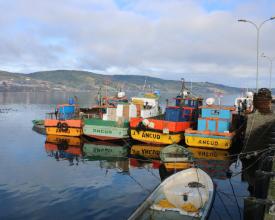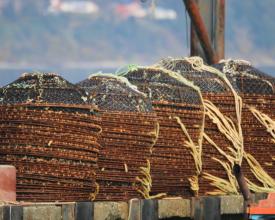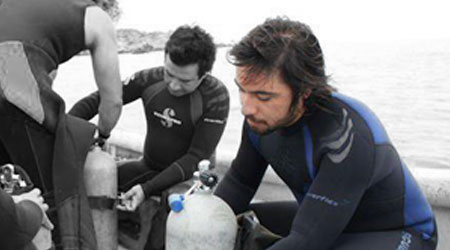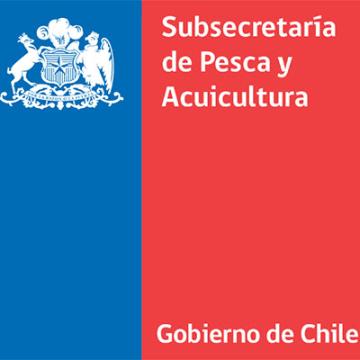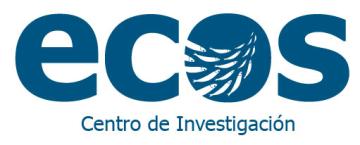
Working towards sustainability of the artisanal stone crab fishery in Ancud, Chile.
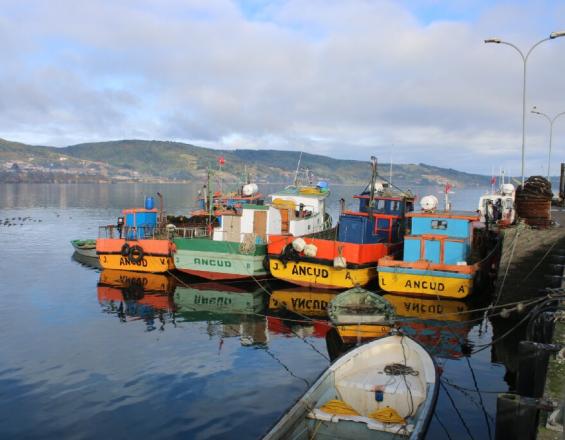
Our work is based on the premise: “fish less and maintain or increase economic remuneration”. To achieve this, stone crab fishers work to distinguish their product from other crab products worldwide in order to obtain a higher value, which in turn will permit less fishing pressure.
Considering that the growing global market demands products managed in a responsible manner, the fishers focused on two objectives: maintaining a sustainable fishery through co-management practices and proving this through the reliable and recognised certification program of the Marine Stewardship Council (MSC).
The fishers have been recognised for their vision of the future. They have participated in fisheries sustainability fora and meetings, stating that environmentally-friendly fishing practices are the best way to maintain the fishing business. In this way, they have become precursors of fisheries sustainability at the local level, encouraging these processes in other fishing communities.
Contexte
Challenges addressed
Biological challenges: avoid overfishing, prevent poor fishing practices, and improve the production of fishery information including impacts on the ecosystem.
Social challenges: overcome the stigmatization of artisanal fishery activity, improve the fishers association, enhance the level of knowledge of the resource biology, train fishers on sustainable and responsible fishing practices.
Economic challenges: improve prices, deal with labor instability, and reduce the uncertainty of fishing activities in the future.
Emplacement
Traiter
Summary of the process
Capacity building has allowed fishers to take concrete actions such as the use of logbooks to move the fishery towards sustainability. This included a review of the fishery against a sustainability standard, which in turn led to the development of a Fishery Improvement Project (FIP) to address identified gaps.
The FIP has scheduled the tasks to address gaps. Different institutions have been engaged in the development of actions over a three-year time period. Clear guidelines have been provided for the design and implementation of a management plan for the fishery, which is being developed within a co-management framework that is recognized by the Chilean fishing sector.
With trained fishermen who have clear guidelines to take the fishery towards sustainability, as well as an instance of public-private co-management, it is expected that sustainability outcomes will be achieved. By obtaining certification for the fishery and positioning the resource in markets that demand sustainable products to increase market opportunities, this should stabilize the income of artisanal fishers.
Building Blocks
Evaluation to the Marine Stewardship Council (MSC) Fisheries Standard.
This building block relates to an external and objective assessment of the fishery to a widely validated sustainability standard (in this case the MSC Fisheries Standard). Carrying out a pre-assessment generates a diagnosis of multiple aspects of the fishing operation, which permits to build a road map for the set of stakeholders involved in the fishery as regulators and direct users to improve each identified aspect. It facilitates the working agenda of each stakeholder in order to reach the common goal of fishing sustainability.
Based on this initial evaluation of the stone crab fishery, a Fishery Improvement Project (FIP) has been designed and implemented with all interested parties. In this process, the necessary actions to reach the MSC's sustainability Standard have been scheduled over the next three years. This includes identifying responsibilities and sources of funds for the achievement of the activities.
Enabling factors
- It is necessary to incorporate other institutions, such as NGOs, foundations, state development agencies and research organisations into the process, which will allow to catalyse the necessary actions to achieve the goals.
- Fluid communication between the stakeholders is important in order to plan join actions for common good.
- The MSC capacity building program offers a range of tools and training initiatives to help fisheries work towards sustainability and certification, including a pre-assessment template and a benchmarking tool.
Lesson learned
The organizational capacity and level of commitment of the social group that will lead the solution is fundamental. A fragmented organisation will not achieve the commitments required for this solution.
Conducting sustainability training processes in the social group that heads the solution was crucial, since it generated a first-time confidence for the solution’s benefit.
The implementation of the solution is initially slow, since it is necessary to carry out convincing work for the different stakeholders, but as they visualize the improvements, the path becomes lighter and the advances are faster.
Formalise and recognise co-management.
The formalisation of a co-management group provides a space for discussion that favors transparency in available information and in the making of specific decisions.
This space for dialogue with key stakeholders in the fishery, whose opinions are correctly validated by their constituent base, enables all stakeholders to work together in the design of a management plan.
This ensures that the measures that will be implemented to achieve sustainability will be respected by the users, since there is full knowledge of decisions and the reasons for taking one or another decision.
This work strategy provides stability and governance to the system.
In this case, it is the Crustacean Management Committee of the Province of Chiloé that must work on the design of a management plan for the Stone crab fishery. In Chile, the law recognizes this co-management instance as an advisory body to the Undersecretary of Fisheries and Aquaculture.
Enabling factors
- It is necessary to maintain transparent actions in information and in decision-making processes.
- The responsibilities of representatives of the co-management group need to be clarified in order to avoid discussing issues or aspects that exceed the objectives of their co-management.
- It is recommended to organise a working plan for the co-management group and to regularly schedule the activities of the group.
Lesson learned
Private representatives - fishermen and processors - handle a large amount of information that is not codified or explicit. Before the co-management system was set up, this information was not available and therefore was not being used for fisheries management.
Often, private and public objectives converge. However, before the creation of the co-management committee these objectives could not be realised or understood to be aligned due to a lack of appropriate communication channels.
The support and involvement of users in research and control is greater under a co-management system than without it.
Logbook training for fishers.
It was necessary to train the fishers who are part of the process in matters of sustainability and good fishing practices. In our case this focused on the introduction and implementation of fishing logbooks.
Presentations provided a first approach to sustainability issues. They gave examples of fisheries that are developed in a sustainable way worldwide and this proved to be well accepted. The transfer of information through videos or infographics turned out to have better reception than presentations made by experts.
The implementation of fishing logbooks first needed explanation and training on why and what is necessary. The logbooks were successfully explained as an accounting system, that, if well managed, can provide information to facilitate the work of the fishers, such as the early identification of fishing areas with low yields, bad fishing seasons, economic returns of the fleet, and more.
The implementation of fishing logbooks was carried out in three phases:
1. Exercises on land filling the logbooks with fictitious fishing operations;
2. Implementation of a pilot at sea, accompanied by a professional on board;
3. Implementation in the fleet with sporadic supervision of a professional on board to identify filling errors.
Enabling factors
- It is crucial to carry out training processes in sustainability matters with the social group that heads the solution. This helps build trust in the benefits of the solution.
- Information delivery through graphic methods as videos and images were well received by fishers.
- To validate the logbooks, the association with a nationally recognized entity in fisheries research was crucial. In this case, the association was with the Fisheries Development Institute (IFOP).
Lesson learned
For the implementation of logbooks, it was useful to designate a fisherman in charge of managing the supply of logbooks to the fleet, as well as receiving and processing the information. Ideally, this post should receive a compensation in order to make it viable over time. In this case, a fund composed of contributions from the fishermen's organization members, plus external funds managed through foundations was used for this purpose.
Impacts
The implementation of a Fisheries Improvement Project has generated short and medium term work commitments between the State of Chile, NGOs, national universities and artisanal fishermen.
The fishers have carried out a pre-assessment of the sustainability of the fishery to the globally recognised MSC standard. This identified areas for improvement and provided, to the State of Chile and the Chiloé Crustacean Management Committee, a clear path to achieve sustainability including through stock assessments and appropriate capture strategies based on population status.
The efforts of the fishers to maintain the stone crab (Metacarcinus edwardsii) fishery at sustainable levels has also generated effects in the social dimension. There is a strong local recognition of this fishing community, which in turn has motivated them to continue learning and improving their fishing activities. They have implemented fishing logbooks, where new data is collected to provide relevant information for the appropriate management of the fishery.
In the economic dimension, it is expected that once the stone crab fishery is certified as sustainable, this implies a market differentiation, awarding a comparative advantage to the artisanal fishers.
Beneficiaries
This initiative benefits directly 80 fishers and indirectly the large artisanal fishing community of Chile, and the State fishery management bodies.
Sustainable Development Goals
Story

The history of the stone crab fishery is a story of social, economic and environmental improvements.
It started in the 1980s, when extraction was carried out mainly by shore fishing using small boats and traps made of tires or other waste. The fishery was only for self-consumption.
Although growing commercial demand led local fishers to increase production, fishing activity was still precarious. The boats lacked autonomy, sanitary conditions were deficient and the fishers had to make great physical efforts since each trap had to be set and lifted manually. This situation persisted for more than two decades.
In 2002, the fishers formed an association and developed a formal commercial fishery. The organisation began to prosper and obtained state development funds. These, along with their own funds, allowed the fishers to professionalize their activities, incorporating better technologies to improve working conditions and safety on board, along with better storage and sanitary conditions that enabled boats to reach port with a higher quality resource.
The stone crab is the most important species in the national crab fishery of Chile. Landings are around 3-4,000 tons per year, which is equivalent to more than US$ 2.8 million of first sale transactions. This supports the livelihoods of many artisanal fishers.
The stone crab fishery is now entirely commercial, and the concern of both the fishers and the State is to maintain sustainable levels of fishing.
To do this, the fishery has been evaluated against the MSC Standard, which provides an external and objective measurement of the status of the fishery. A pre-assessment report has now been completed for this fishery which provides a road map to sustainability.
The State has formalised a co-management group, where the public bodies responsible for regulation and inspection of fisheries, the direct users of the fishery, the artisanal fishers and the crab processors are represented.Together, this group will build a management plan and ensure the sustainability of the fishery.
These actions have catalysed the implementation of a Fisheries Improvement Project (FIP), where different agents such as the Undersecretariat of Fisheries and Aquaculture, Universities, NGOs and artisanal fishermen have been involved in order to address the information and management gaps necessary to ensure sustainability in the fishery and to improve the value chain of the resource.

